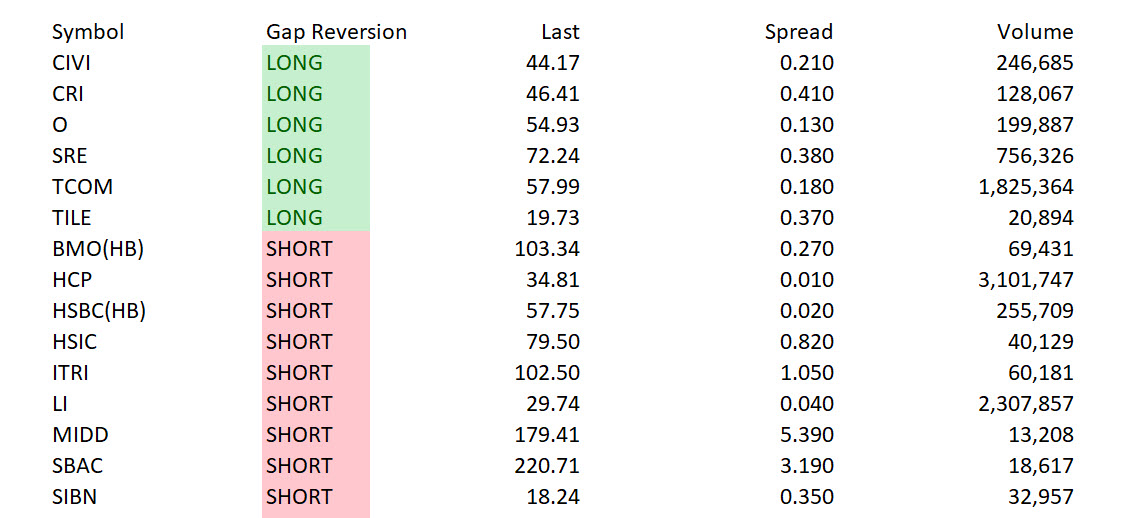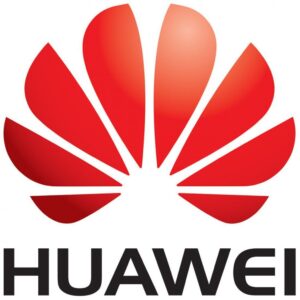The Small Cap Swing Trader Alert Archive
Below you'll find The Small Cap Swing Trader setups stacked up and ordered chronologically.February 26, 2025

Tesla Stock Price Drop
Tesla Stock Price Drop: Why TSLA Valuation is Crashing in 2025
What’s Behind Tesla’s Recent Stock Decline?
The Tesla stock price drop has been significant, with shares falling 8.4% on February 25, 2025, bringing its valuation below the $1 trillion mark. Investors are concerned about declining sales in key markets, increasing competition from China’s BYD, and CEO Elon Musk’s growing political involvement. These factors have created uncertainty around Tesla’s future growth, leading to a sharp selloff.
👉 Related Reading: How Market Trends Impact Tesla Stock
1. Tesla’s Declining Sales in Major Markets
One of the biggest factors behind the Tesla stock price drop is its weakening sales performance in major regions:
-
Europe: Tesla’s sales in Europe plummeted by 45% in January 2025, with only 9,945 vehicle registrations, compared to 18,161 in January 2024. Meanwhile, overall electric vehicle (EV) sales in Europe grew by 37%, signaling that Tesla is losing market share.
(Source: Reuters) -
United States: Tesla’s U.S. sales declined by 13% year-over-year in January, reducing its BEV market share from 59% to 45%.
(Source: Barron’s) -
China: Tesla’s sales in China fell 15% year-over-year in January, as local competitors gained traction.
(Source: Barron’s)
👉 Related Reading: EV Market Trends and Tesla’s Position
2. Rising Competition from BYD and Other EV Makers
Tesla is no longer the undisputed leader in the EV market, as competitors, especially China’s BYD, are rapidly gaining ground.
-
BYD’s Market Surge: BYD reported a 41% increase in EV sales in 2024, compared to Tesla’s declining sales.
(Source: AP News) -
Affordable Alternatives: Chinese automakers produce more cost-effective EVs, cutting into Tesla’s dominance.
With competition rising, investors fear that Tesla’s market share and profit margins will continue to shrink, adding to the Tesla stock price drop.
3. Elon Musk’s Controversial Influence on Tesla
Elon Musk’s political activism and divisive public statements have impacted Tesla’s brand reputation, especially in Europe, where negative sentiment toward Musk is growing.
- Public Perception Issues: Musk’s involvement in political affairs and controversial opinions may deter potential buyers.
- Tesla’s Declining Appeal: Many analysts believe Musk’s actions damage Tesla’s image, contributing to sales declines.
4. Concerns Over Tesla’s High Valuation
Despite recent losses, Tesla remains one of the most highly valued automakers, raising concerns among investors.
- Overvaluation Fears: Analysts have long debated whether Tesla’s stock price accurately reflects its growth potential.
- Slowing Growth: With sales declines and competition increasing, investors are reassessing Tesla’s valuation, leading to further selling pressure.
What’s Next for Tesla Stock?
The Tesla stock price drop may not be over yet, as Tesla faces declining sales, intensifying competition, and CEO-related controversies.
- If sales continue to fall, TSLA stock could decline further.
- If Tesla stabilizes demand and regains market confidence, it may recover.
Investors should watch upcoming earnings reports and global EV trends to assess Tesla’s future trajectory.
NVDA Stock Price After Earnings
NVDA Stock Price After Earnings: Why a 10% Move is Expected on February 26, 2025
Nvidia’s Post-Earnings Volatility: What to Expect
The NVDA stock price after earnings is expected to see a sharp 10% move when Nvidia announces its quarterly results on February 26, 2025. Multiple factors, including rising trade tensions between the U.S. and China and increasing competition from China-based semiconductor manufacturers fuel this volatility. Investors are watching closely, not just for the revenue and earnings figures but also for Nvidia’s forward guidance, which will shed light on how the company plans to navigate these challenges.
Why NVDA’s Stock Price Could Swing 10%
Nvidia is known for major post-earnings price swings, with options-implied volatility suggesting a 10% move in either direction. The factors contributing to this anticipated price action include:
1. Trade Tensions and Export Restrictions
The ongoing U.S.-China trade war has put Nvidia in a difficult position, especially after the Biden administration imposed stricter export controls on advanced semiconductor technology. These restrictions have limited Nvidia’s ability to sell high-end AI chips to China, a major market for the company.
In previous earnings calls, Nvidia has warned about potential revenue hits from these restrictions. If management reiterates concerns about lost revenue from China, NVDA stock price after earnings could experience significant downside pressure. Conversely, if Nvidia reveals alternative strategies—such as ramping up sales in other regions—investors could see this as a bullish signal.
2. China’s Semiconductor Competition is Heating Up
China has aggressively invested in domestic semiconductor manufacturing, with companies like Huawei and SMIC ramping up AI chip production. While these firms still lag behind Nvidia regarding technology, they are progressing rapidly.
A key concern for investors is whether Chinese companies can offer viable alternatives to Nvidia’s GPUs. If competition intensifies, NVDA stock price after earnings could drop due to fears of market share loss. However, if Nvidia’s management dismisses China’s advancements as overhyped, investors may remain confident in Nvidia’s dominance.
3. AI Demand and Data Center Growth
Despite geopolitical risks, global AI adoption continues to surge, with Nvidia remaining a key player in AI computing, gaming, and cloud infrastructure. The upcoming earnings report will provide insight into whether Nvidia still benefits from AI-driven demand or if enterprise spending has slowed.
If the company reports strong sales growth in AI chips, data centers, and gaming GPUs, this could counterbalance the trade war concerns and push the NVDA stock price higher after earnings.
4. Nvidia’s Guidance: What Investors Should Watch
Aside from earnings and revenue, Nvidia’s guidance will be the biggest market-moving factor. Wall Street analysts will look for:
- China’s impact on Nvidia’s future revenue projections
- Data center and AI-related demand trends
- Any updates on upcoming product launches or new markets
- Potential supply chain disruptions affecting production
If Nvidia lowers guidance, expect the stock price to drop sharply after earnings. However, the stock could rally if management expresses confidence in demand resilience.
How Traders Can Position Themselves
Traders anticipating the 10% move in NVDA stock price after earnings can consider:
- Options Strategies: Straddles and strangles to profit from volatility
- Pre-Earnings Entries: Positioning based on implied volatility trends
- Post-Earnings Trades: Waiting for guidance details before making directional bets
Final Thoughts: High-Stakes Earnings for Nvidia
The NVDA stock price after earnings is set for a significant 10% move on February 26, 2025. With trade tensions rising, Chinese competition increasing, and AI demand surging, Nvidia’s forward guidance will be the key market-moving factor. Traders and investors should brace for big swings and be prepared for the opportunities that volatility presents.
External Sources:
February 25, 2025

Huawei AI Chip Production Advances: A Game-Changer for China’s Tech Future
Huawei’s Breakthrough in AI Chip Production
Huawei AI chip production has taken a major leap forward, marking a significant shift in China’s push toward self-sufficiency in advanced semiconductor technology. The company has improved the yield rate of its Ascend 910C processors from 20% to nearly 40%, making production profitable for the first time. This advancement makes Huawei stronger against U.S. export controls and global semiconductor competitors like Nvidia.
How Huawei AI Chips Are Overcoming U.S. Restrictions
Huawei has partnered with Semiconductor Manufacturing International Corporation (SMIC) to produce these AI chips using its N+2 process. Notably, this manufacturing process does not require extreme ultraviolet (EUV) lithography, a technology currently restricted by U.S. sanctions. This advancement is crucial for China’s long-term strategy to reduce dependence on foreign semiconductor suppliers.
Huawei is expected to ramp up in 2025, with plans to manufacture 100,000 Ascend 910C processors and 300,000 Ascend 910B processors (Financial Times).
Huawei vs. Nvidia: The AI Chip Battle
Despite its production gains, Huawei faces stiff competition from Nvidia, which dominates the AI chip market in China. Nvidia’s edge comes from its software ecosystem, making it the go-to choice for AI applications. However, Huawei is working to close this gap by refining its AI chip software and increasing production efficiency.
With an industry target yield rate of 60%, Huawei must improve to gain a stronger foothold in the global AI chip market.
Implications for the Semiconductor and AI Markets
The rise of Huawei AI chip production has broader implications for the semiconductor industry and AI-driven markets:
- AI-Powered Trading – AI technology is increasingly used in algorithmic trading. Investors should monitor how Huawei’s AI chip advancements impact high-frequency trading strategies.
- China’s Self-Sufficiency Goals – Beijing’s ambition to lead in AI and semiconductor technology is gaining traction, making this an important development for tech investors.
- Tech Sector Volatility – Increased competition in the AI chip market could introduce new volatility in semiconductor stocks, affecting market dynamics.
What This Means for Traders
Traders looking at semiconductor stocks and AI-driven companies should watch Huawei’s AI chip production closely. Based on Huawei’s progress, companies like Nvidia (NVDA), AMD (AMD), and SMIC (0981.HK) could see shifts in market positioning.
Additionally, traders should consider how AI chip advancements affect algorithmic trading, as increased AI capabilities could lead to more sophisticated market predictions (TraderInsight: The Role of AI in Trading Strategies).
Final Thoughts
Huawei AI chip production is a pivotal development in the global tech landscape. As China accelerates its AI and semiconductor ambitions, investors and traders alike should closely monitor how this impacts AI stock trends, semiconductor investments, and trading strategies.
For more insights on AI trading and market strategies, check out these related articles:
DeepSeek and Its Disruption of the AI Industry and Stock Market



